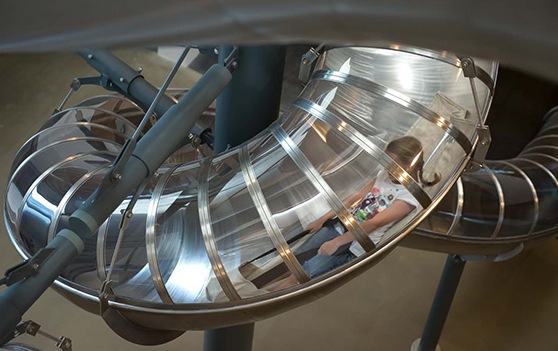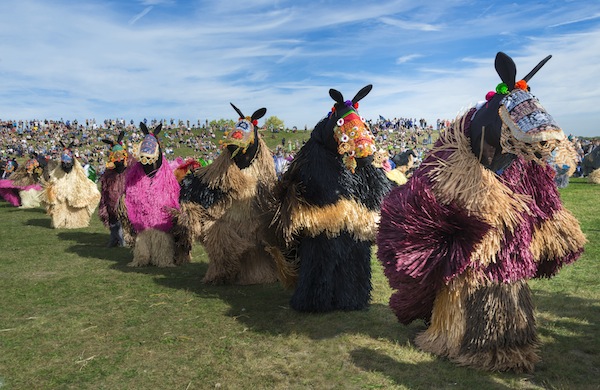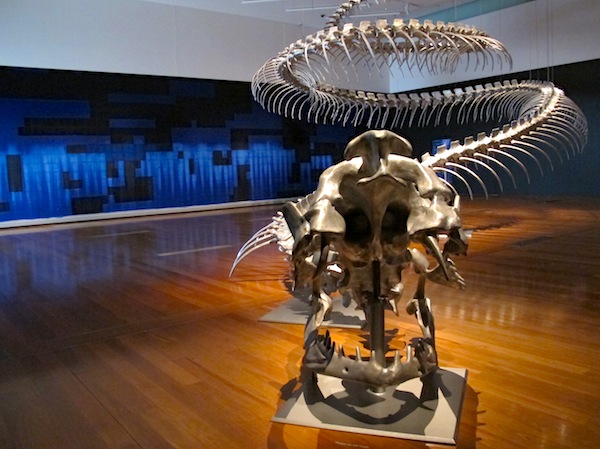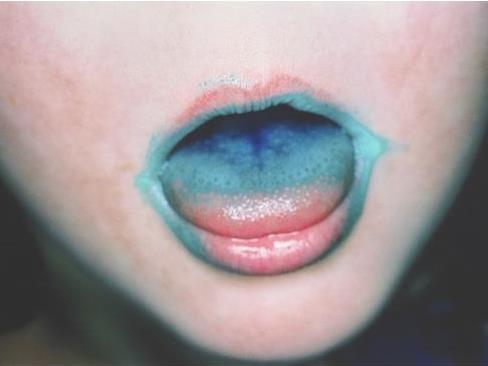Anne Noble, Ruby’s room no.17 2001; Collection: Queensland Art Gallery © The artist
500 square meters of cascading coloured hair; a 8 metre-high twin spiral slide, 60 dancing horses, and a flock of finches that have taken roost in the gallery – Sugar Spin is a kid-in-a candy-store experience for art audiences.
Taking her cue from Queensland’s identity as the sugar state, Curator Geraldine Barlow has pulled together over 250 artworks from the Queensland Art Gallery I Gallery of Modern Art’s Collection to celebrate GOMAs ten-year anniversary. She describes it as a ‘dramatic itinerary’ through GOMA’s exhibition spaces and collections.
‘For me this idea of “sugar spin” was about creating the feeling of an energy pill, but I also wanted the challenges within the art to engage people; I wanted it to be more than a theme park,’ she said.
Barlow has curated a very physical, big impact exhibition but that doesn’t mean everything has to super-scale. The smallest work in the exhibition is just 4 cm in diameter, a glass bead by Australian jeweller Helen Britton displayed in a themed chapter of the exhibition that unpacks what, and how, we define cultural treasures.

Detail of audience with Carsten Höller‘s Left/Right Slide 2010; Commissioned 2010 with a special allocation from the Queensland Art Gallery Foundation; Photograph GOMA 10 blog hub, QAGOMA © The artist
From gobstoppers to tiny tots
Barlow described viewing Sugar Spin: You, me, art and everything a bit like holding a sticky sweet in your hand on a summer’s day – that sweet melt of things favourite and familiar, and the tensions of reality and play.
It brings back visitor favourites such as Carsten Höller’s Left/Right Slide spiralling gallery-goers from the top floor of GOMA to the foyer; Ron Mueck’s oversized In bed; Olafur Eliasson’s interactive installation of thousands of Lego pieces, The cubic structural evolution project; and Céleste Boursier-Mougenot’s musical installation of live finches, from here to ear (v.13).

Ron Mueck’s In bed 2005; Purchased 2008. Queensland Art Gallery Foundation; Photograph: Natasha Harth, QAGOMA, © The artist
But there are also newly commissioned works, such as Icelandic-born artist Hrafnhildur Arnardóttir a.k.a. Shoplifter’s sensorial installation Nervescape. It turns the two-story central gallery into a very hairy psychedelic landscape, like ferry-floss on steroids and begging visitor engagement.
Nervescape is Shoplifter’s largest work to date – in fact about twenty times the size of what she has made before. ‘She thought we got the scale wrong,’ said Barlow
Hrafnhildur Arnardóttir (aka Shoplifter) introduces her installation Nervescape V commissioned for GOMAs tenth anniversary exhibition “Sugar Spin”; produced by QAGOMA YouTubeIt sits beautifully with American sculptor and performance artist Nick Cave’s new work Heard, which enters the Gallery’s Collection with the support of a long-standing benefactor.
Dancers will bring Cave’s vibrant raffia horses into a gyrating electrifying performance for the opening celebrations, and will then be presented – as if caught in freeze-frame – in the gallery.
Barlow enjoys the connection between the contemporary and traditional works in the exhibition. ‘One of the works that has been a real inspiration in curating this exhibition was the suite of headdresses from the Coastal Arapesh people in Papua New Guinea. For me, they have a really interesting connection to Nick’s work – they are both working totally in a continuing ceremonial tradition but are using new materials; there’s this sense of playfulness and innovation and amazing sing-sings.’

Nick Cave, HEARD•DETROIT 2015; Photograph: James Prinz Photography, Image courtesy: The artist and Jack Shainman Gallery, New York © The artist
‘No other gallery would have something like those headdresses – they’re a bit ethnographic but then too radical in their use of materials to fit. Then for many contemporary art galleries they are too authentic to a place that they don’t pay much attention to them, so I thought this is something very distinctive that GOMA does and should be at the fore of this celebration.’
Creating that bridge between GOMA’s collected history through the Asia Pacific Triennial and its holdings of Australian contemporary art has been a challenging curatorial journey for the Head of International Art.
The darker side of sugar
An important aspect of celebrating GOMAs journey of ten years was to look at some of the more socially, politically and racially contentious works.
The exhibition is divided into chapters or themes across the exhibition – Sweet Melt, Blackwater, Treasure, Cosmos, and Soaring.
‘For me this idea of the theme Sweet Melt is the telling of a sweet story, but also starting to question that as well.’
Barlow asked: ‘What if we eat too much sugar? Are we in a society that is a little bit obsessed with these swift points of gratification, these packaged sound bites that allow us to stay in our tribal groups of pre-decided opinions? How do we mix it up, and can the gallery be a place to come together and reshape some of those allegiances, and kind of spin it around and put a little disorientation for us to put it back together and make something different for the future.’

Installation view of GOMAs ten year anniversary exhibition “Sugar Spin”; Photo ArtsHub.
‘I was interested in idea of moving above the landscape and to look at works that take you higher, but also building in this idea of skin and identity and moving from one generation to another and what happens when generations are interrupted,’ she continued.
Balancing the hair, the slides, the pillows and birds are works such as Gordon Bennett’s shooting gallery, Vernon Ah Kee’s portrait of his daughter and great grandmother and Destiny Deacon’s map of the world in honey slowly being eaten by ants.
‘We are stacking up the treasure but it is starting to get a little uncomfortable, a little wrong. I wanted this exhibition to allow us to find a way to identify with, to think what that is through time, and to be disrupted slightly while feeling comfortable in its familiar play,’ said Barlow.

Monir Shahroudy Farmanfarmaian, Lightning for Neda 2009; Mirror mosaic, reverse-glass painting, plaster on wood The artist dedicates this work to the loving memory of her late husband Dr Abolbashar Farmanfarmaian. Purchased 2009. Queensland Art Gallery Foundation, Photograph: Mark Sherwood, QAGOMA © The artist
Curating a milestone
As a 10th anniversary exhibition Sugar Spin strives to define what is particular about GOMA.
Part of that is its effect on the culture of Queensland. ‘When it was built, GOMA transformed the Queensland Art Galley into a dynamic two-site institution, a force for cultural change that has increased the local appetite for contemporary art and changed perceptions of Brisbane and Queensland,’ said Director Chris Saines.
For Barlow, a key part of GOMA’s identity is its use of scale. ‘Coming from Melbourne and remembering my first experience of the spaces at GOMA I found them so vast, and I felt very excited to see art given such a place and scale, but I also felt it could be a bit alienating.’
She said the challenge in curating Sugar Spin was to keep it close to people while giving them a sense of wonder.
‘We were really trying to find the balance in that back and forward, between the memory pieces and the anchors.’
Sugar Spin: you, me, art and everything is GOMA’s free, summer exhibition opening from 3 December – 17 April, 2017





